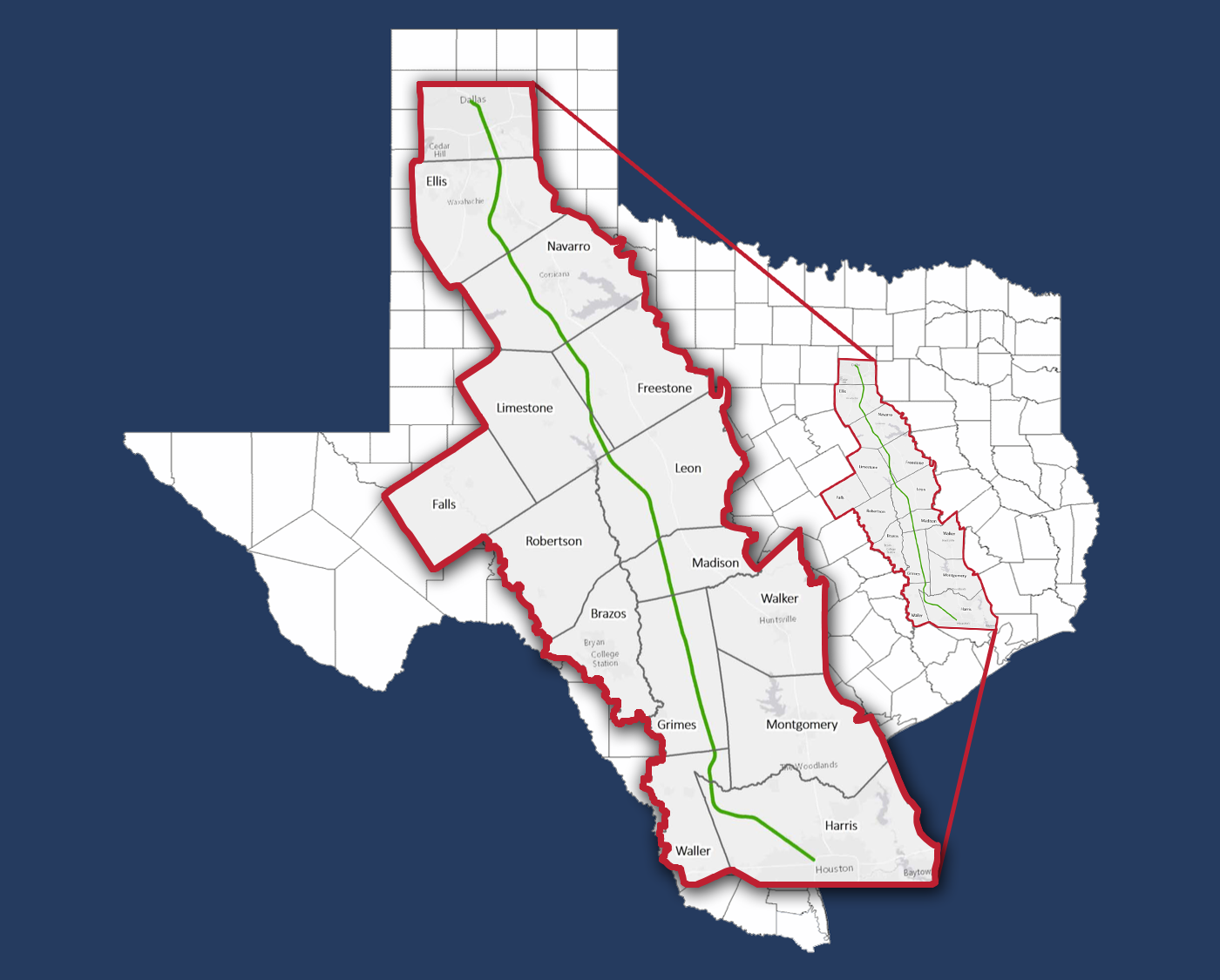

/arc-anglerfish-arc2-prod-dmn.s3.amazonaws.com/public/SAU5MAMQX336POT6N5E3CRBBRI.jpg)
During testimony to Congress in May 2020, Waller County Judge Trey Duhon III said that if the line "is built, the project will hit rural and minority communities along the proposed route like mine the hardest, including the other end of the proposed route of south Dallas where entire low-income minority neighborhoods would be displaced because only one route was ever considered.” The high court's denial of review "should put an end to over five years of contentious litigation," the developer said.īut opposition remains. The appeals court concluded that Texas Central qualifies as an entity entitled to use survey and eminent domain authority under the Texas Transportation Code, Texas Central said in a statement.
#Dallas to houston high speed rail route trial#
The plaintiff landowner won the case at trial court in 2019, but that decision was overturned in the Texas Court of Appeals in May 2020. Texas Central) that challenged Texas Central’s ability to use eminent domain to build the railway. The Texas high court declined to hear a lawsuit ( James Miles v. Texas Central currently has control of more than 600 parcels of land, representing about 40% needed for the railroad, Ragsdale says. as a partner and Suffolk and Matthews Southwest as our station construction partner."

“In addition to Webuild, we announced Kiewit Infrastructure South Co. “We have all the players we need to execute the construction and operate the train,” Ragsdale says. The company expects to transport more than 400,000 passengers daily, which should help cut greenhouse gas emissions by an estimated 101,000 tons annually by reducing car travel. The rail system is based on Central Japan Railway’s Tokaido Shinkansen system and will carry travelers at speeds of up to 200 miles per hour, making the trip from Dallas to Houston less than 90 minutes in length-with one stop in the Brazos Valley. of Transportation’s Federal Railroad Administration of final specific safety rules for the line and its Record of Decision, Ragsdale says. Texas Central reached several major regulatory milestones during that time, including release by the U.S. While the pandemic factored into the length of time between the award announcement and the final agreement, refining the scope of work was the most significant cause, she says. “The value of the contract has increased because the project scope has been more defined, including geotech, refinement of the specification requirements-ballast, as an example-additional watershed management requirements and investments, additional utility relocation work, and most importantly, additional work related to reducing impacts on land owners and residents of the counties the train will traverse-for example, reducing the road over rail passes from 46 to 11 and additional road work improvements,” Ragsdale explains.


 0 kommentar(er)
0 kommentar(er)
